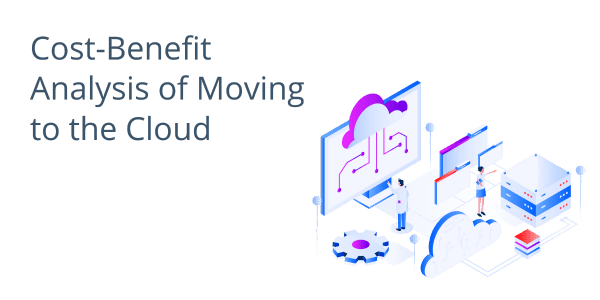The transition to cloud computing is a pivotal moment for businesses, offering a plethora of benefits from enhanced flexibility to cost savings. However, making the leap to the cloud requires careful planning and evaluation of your current IT infrastructure.
Here’s a guide to help you determine if your business is ready to embrace cloud computing and how to make the transition as smooth as possible.
A Real-World Scenario: The Legal Firm’s Transformation
Imagine a mid-sized legal firm, Johnson & Partners, with a stellar reputation in the industry and a growing clientele. Their success, however, was hindered by an outdated IT infrastructure, leading to slow document retrieval times, limited remote access capabilities, and a general decrease in firm-wide productivity.
The partners realized that to sustain their growth and maintain their competitive edge, a technological transformation was necessary.
After a thorough evaluation of their existing servers, network capabilities, and the overall IT setup, Johnson & Partners decided to transition to cloud computing.
This move not only resulted in enhanced document management and improved remote access for lawyers on the go but also led to significant cost savings, eliminating the need for expensive server upgrades and maintenance.
 Evaluating Your Current IT Infrastructure
Evaluating Your Current IT Infrastructure
Just like Johnson & Partners, before diving into the cloud, it’s crucial to assess your existing IT setup.
This involves:
Identifying Critical Data and Applications: Determine which parts of your business operations are reliant on specific data and applications. Understand their role in your daily activities and how they contribute to your overall business goals.
Analyzing Server Utilization: Evaluate the performance and capacity of your current servers. Are they due for an upgrade or replacement? Moving to the cloud could be a more cost-effective solution than investing in new hardware.
Understanding Bandwidth Requirements: Cloud computing relies on a stable and fast internet connection. Ensure that your current network can handle the increased load, especially if you’re planning to move large volumes of data or run bandwidth-intensive applications in the cloud.
 Ensuring a Secure and Reliable Connection
Ensuring a Secure and Reliable Connection
The backbone of cloud computing is a robust internet connection.
Here’s how to ensure yours is up to the task:
Invest in Reliable Internet Services: Choose an internet service provider known for its reliability and speed. Downtime can be costly, and a stable connection is non-negotiable when it comes to cloud computing.
Optimize Your Network: Work with IT professionals or remote desktop services to determine the optimal bandwidth for your cloud computing needs. They can help you understand your current usage and recommend upgrades if necessary.
 Cost-Benefit Analysis of Moving to the Cloud
Cost-Benefit Analysis of Moving to the Cloud
Transitioning to the cloud should make financial sense for your business. Consider the following:
Comparing Costs: Evaluate the long-term costs of maintaining your current servers versus moving to the cloud. Include factors like maintenance, upgrades, and energy consumption in your calculations.
Scalability: One of the major advantages of cloud computing is its scalability. Ensure that the cloud services you choose can grow with your business, allowing you to pay for only what you need when you need it.
 Seeking Professional Guidance
Seeking Professional Guidance
Making the transition to cloud computing is a significant decision, and seeking professional advice can be invaluable.
Consult with Cloud Computing Experts: Reach out to cloud service providers like CyberlinkASP to discuss your specific needs and get guidance on the best way to transition to the cloud.
Conducting an IT Infrastructure Evaluation: A thorough evaluation of your current IT setup can highlight potential challenges and opportunities in moving to the cloud. Professionals can help you navigate this process, ensuring a smooth transition.
In Conclusion
Cloud computing has the potential to transform your business operations, offering flexibility, scalability, and cost savings. By carefully evaluating your current IT infrastructure, ensuring a reliable internet connection, conducting a thorough cost-benefit analysis, and seeking professional guidance, you can ensure that your business is ready to reap the benefits of the cloud.
Embrace the future with confidence, knowing that your business is cloud-ready, just like Johnson & Partners did, paving the way for sustained growth and success.


 Ensuring a Secure and Reliable Connection
Ensuring a Secure and Reliable Connection Cost-Benefit Analysis of Moving to the Cloud
Cost-Benefit Analysis of Moving to the Cloud Seeking Professional Guidance
Seeking Professional Guidance